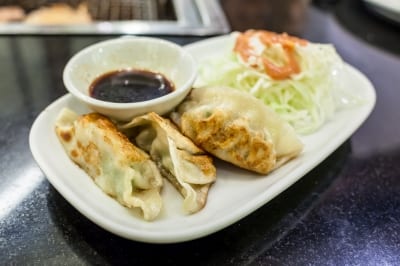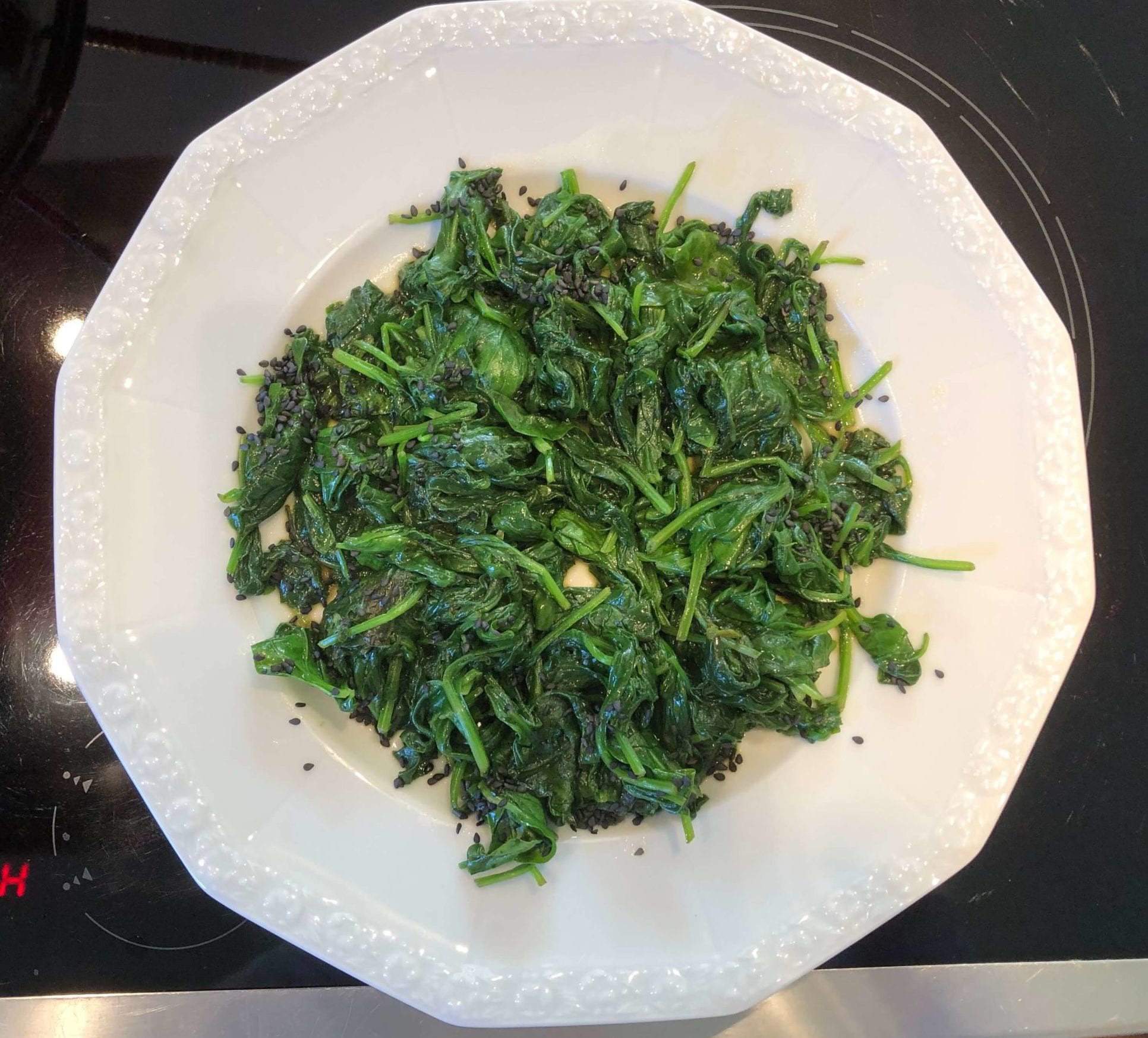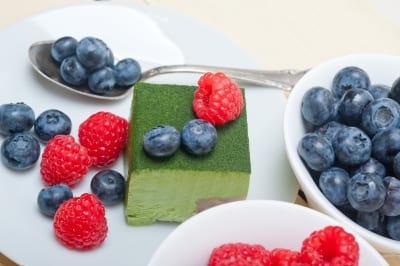Sushi Maki
Rolled Sushi - sushi maki is the most famous way to prepare sushi. They are much easier to make than you might think.
Portions
makes about 24 pieces = about 2 portions
Time:
Approx. 30 minutes to 1 hour depending on how often you´ve made them
Calories:
approx. 35 per piece (depending on content)
good as:
convivial meal with friends, appetizer
Introduction
about this recipe
Sushi was originally not a dish, but a method of preservation. Cleaned fish was preserved in cooked rice.
Normally Sushi is eaten with your hands hand and popped into the mouth in one piece. In western countries, it is common to eat it with chopsticks. A traditional sushi meal consists of different sushi variations.
There are no rules about the order in which they are eaten. Often one starts with an omelette as a topping, followed by low-fat fish with white meat and then sour fish such as herring and mackerel. This is followed by red coloured fish such as low-fat tuna; the final part of the meal consists of fish of the fatter type.
Miso soup is often eaten with sushi as a starter (very good for the intestines, as it is made of fermented soybeans). Green tea or beer is served as a drink.
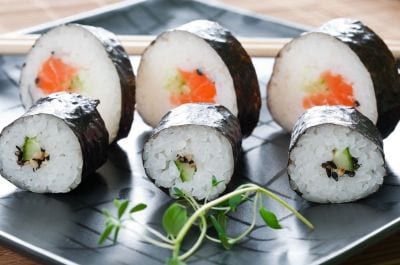
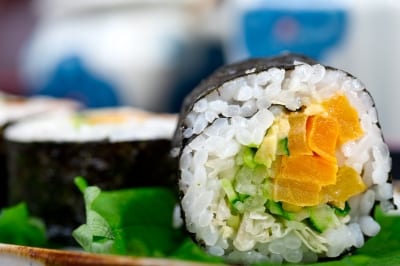
ingredients
- 250g sushi rice
- 350ml water
- 1piece Kombu (edible kelp said to contain umami - optional)
- 1-2 tablespoons rice vinegar
- 1/2 teaspoon salt
- 1 tablespoon of sugar
- 6 nori leaves
- 1/2 ripe avocado cut into finger-sized strips
- 5cm piece of cucumber cut into finger strips
- 100g fish fillet of your choice (If you do not want to use raw fish, canned tuna and smoked salmon are also possible)
- To serve
- Shoyu (Japanese soy sauce)
- pickled ginger
- Wasabi
- Mayonaise
Rice is the most important ingredient in sushi. There are several sub-varieties of the Japonica variety on the market. it´s important that it is glutinous, which means sticky not containing gluten. You can make sushi with rice pudding rice if nothing else is available. Of course you can make Sushi even healthier by using brown rice. You have to cook it a bit longer to make it softer than normal, because it is easier to compress. It doesn't get sticky. so it is difficult to handle.
- First you have to wash the rice in cold water until the water is completely clear.
- Then you put rice, water (not the water used to wash) and if necessary Kombu (brown/green algae for seasoning) in a suitable pot and bring it quickly to a boil.
- Now you can take out the piece of kombu.
- Turn the heat down quite a bit and set a timer to 10 minutes. That's the absorption method.
- Then turn the heat off and let the rice rest for 15 minutes.
- Empty the rice into a large, wide bowl, (Japanese "sushi oki")
- Mix the vinegar, sugar and salt together. Spread this evenly over the rice.
- Now you have to work with both hands: you need one hand to fan to cool the rice and the other hand using a flat wooden spoon (shamoji) to spread the seasoning without breaking the rice grains.
- The sushi rice is ready to use when it is at room temperature and looks slightly shiny.
The recipe in the video is slightly different, you can always vary a little.
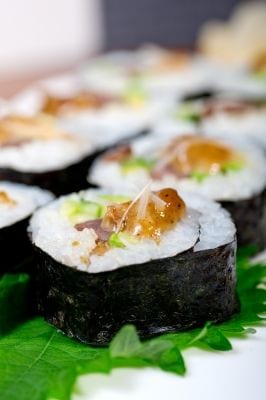
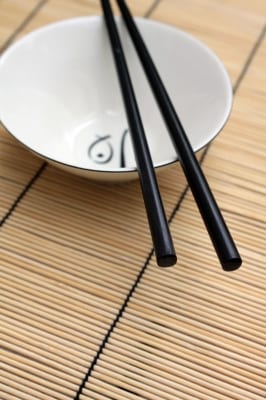
Step by step guide
Step 1
Divide the rice into 6 portions. Put half a nori leaf with the shiny side down on a sushi roll mat. Wrap the mat with clear foil beforehand. Or wash the mat thoroughly afterward and dry it. (Environment friendly)
Step 2
Divide the rice into 6 portions. Put half a nori leaf with the shiny side down on a sushi roll mat. Wrap the mat with clear foil beforehand. Or wash the mat thoroughly afterward and dry it. (Environment friendly)
Step 3
Spread a thin strip of wasabi and mayonaise on each side in front of you. Put a row of avocado on top, then put a strip of fish next to it and a row of cucumber on top or next to it.
Step 4
To roll the sushi, fold the mat away from you. You start where the ingredients are. Roll slowly and lift the mat again and again. Seal the rolls by placing the ends of the sheets on top of each other and press gently.
Step 5
Take the roll from the mat and cut it in even slices with a sharp knife!
You can garnish with sesame and/or fish eggs.
Serve with soy sauce, pickled ginger, wasabi and mayonaise!
いただきます - ITADAKIMASU
Is sushi healthy?
Fish
Raw fish. It is extremely important to ensure that the fish is of high quality and is consumed immediately. You should only prepare as much sushi as you will eat. If there are any left over, you can fry them briefly in the pan to cook the fish. Not everyone should eat raw fish - it is not suitable for pregnant women for example.
Fish is an important supplier of very valuable animal proteins, iodine and omega-3 fatty acids. It is also an excellent source of vitamin D. Salmon, mackerel and eel stand out here.
Rice
White rice is used for sushi. This is ground and polished. Unfortunately, it therefore contains hardly any vitamins, minerals and fibre. If you eat sushi as a family meal in Japan, there are many other side dishes on the table. Vegetables like pumpkin, spinach etc... These are valuable fibres and balance the rice a bit. Other types of rice are not sticky enough to hold there form.
Nori leaves
Nori algae have no fat and are rich in protein. They are fibre and have the vitamins A, C, E and B 12. They also contain iodine and zinc.
They are a goodsource of protein and fibre. People with hyperthyroidism should be somewhat cautious. You can use nori leaves cut into small pieces for seasoning and also use them outside the sushi kitchen, e.g. to make fish packages. The Japanese eat them as a snack.
Soy sauce
Soy sauce, which has been produced traditionally, consists of very valuable ingredients: A few amino acids and a relatively high protein content, but no fat and few calories. According to a US study, dark soy sauce has ten times as many antioxidants as red wine. But you don't drink soy sauce by the glass. The cheap, industrially produced soy sauce often contains flavour enhancers, preservatives and colourings. It is worth spending a little more on it. Soy sauce is salty, but you don't usually use salt.
Are there vegetarian options?
Sure there are. You can fill the nori leaves with shitake mushrooms, peppers, pumpkin, avocado, cucumber, tofu and whatever else you can think of. Just try it out!
On the website of Sushirolle.de you will find infinite combinations of Sushi recipes
We've already tried them
"I didn't want to try sushi at first, but it's so easy to make and soooo delicious. I always eat way too much of it! My favourites are the ones with salmon and cucumber."
"I am currently in Japan and often eat really good sushi. I've also learned how to prepare it myself. I like to take some rolls to uni for lunch. “
More recipes
Pictures:
Sushi on orange plate Photo by tiramisustudio
2 x Fresh Sushi Choice Combination Assortment Selection KEKO64
Sushi on white plate Japanese Sushi by tiramisustudio
Rice Bowl And Chopsticks by Simon Howden
Fried Gyoza On White Dish by criminalatt
Green Tea Matcha Mousse Cake With Berries by KEKO64
All pictures above at FreeDigitalPhotos.net
Other pictures Elegant Themes, Dawn
Sources:
Kataoka, S. K. (2005, September 3). Functional effects of Japanese style fermented soy sauce (shoyu) and its components. ScienceDirect. https://www.sciencedirect.com/science/article/abs/pii/S138917230570459X

